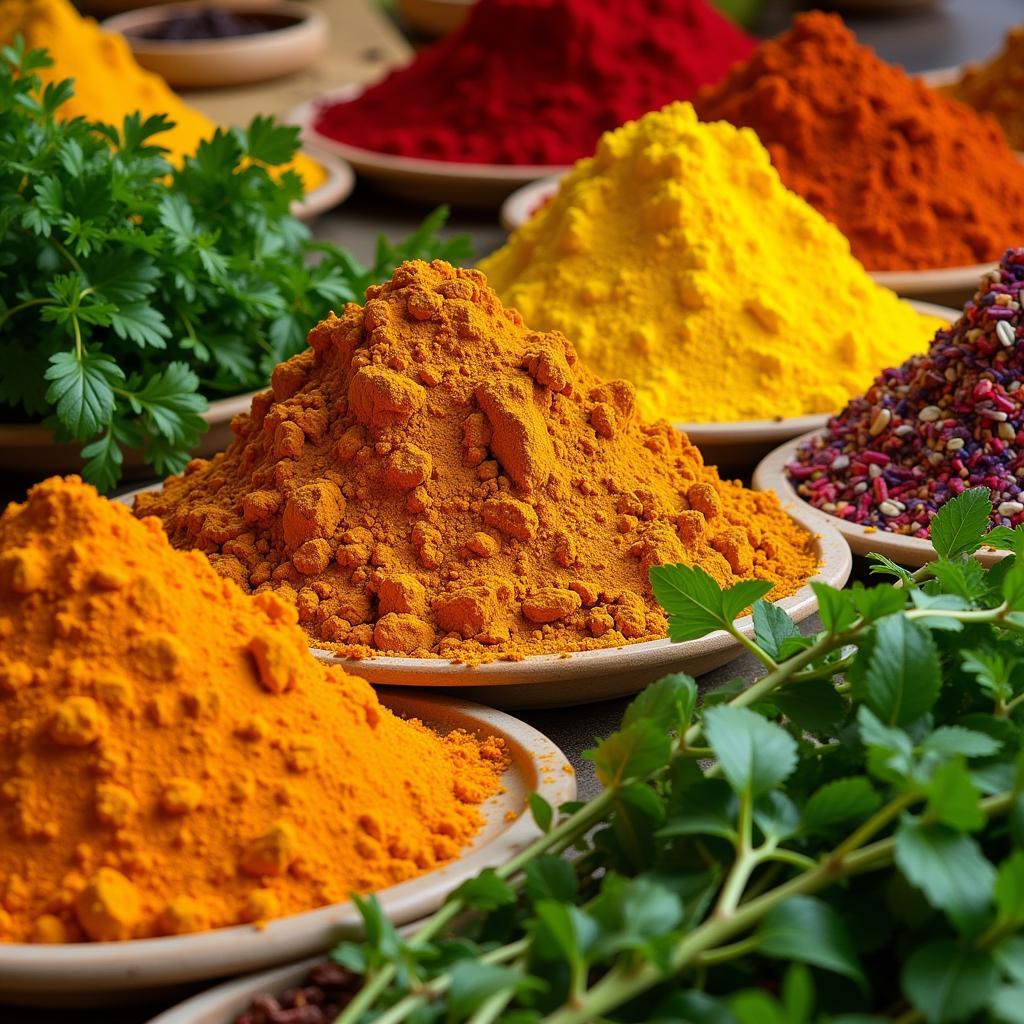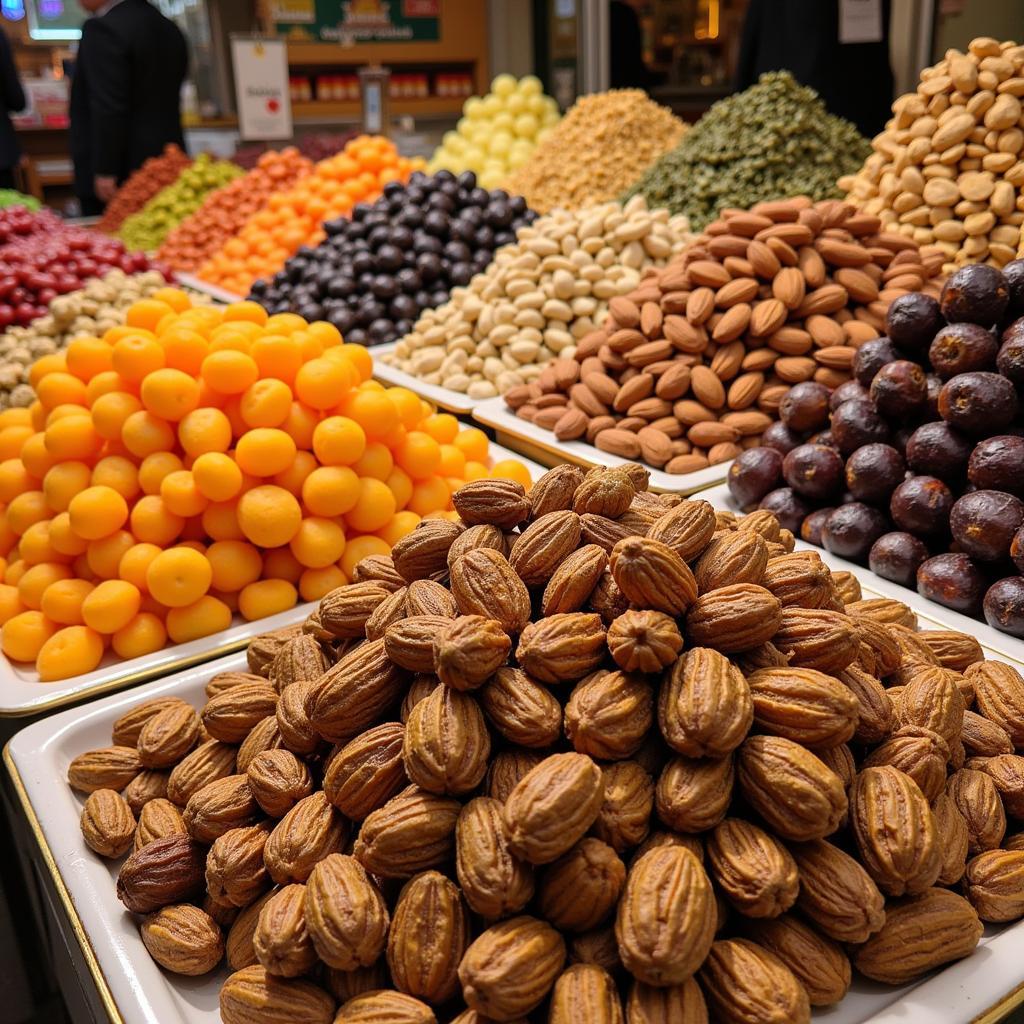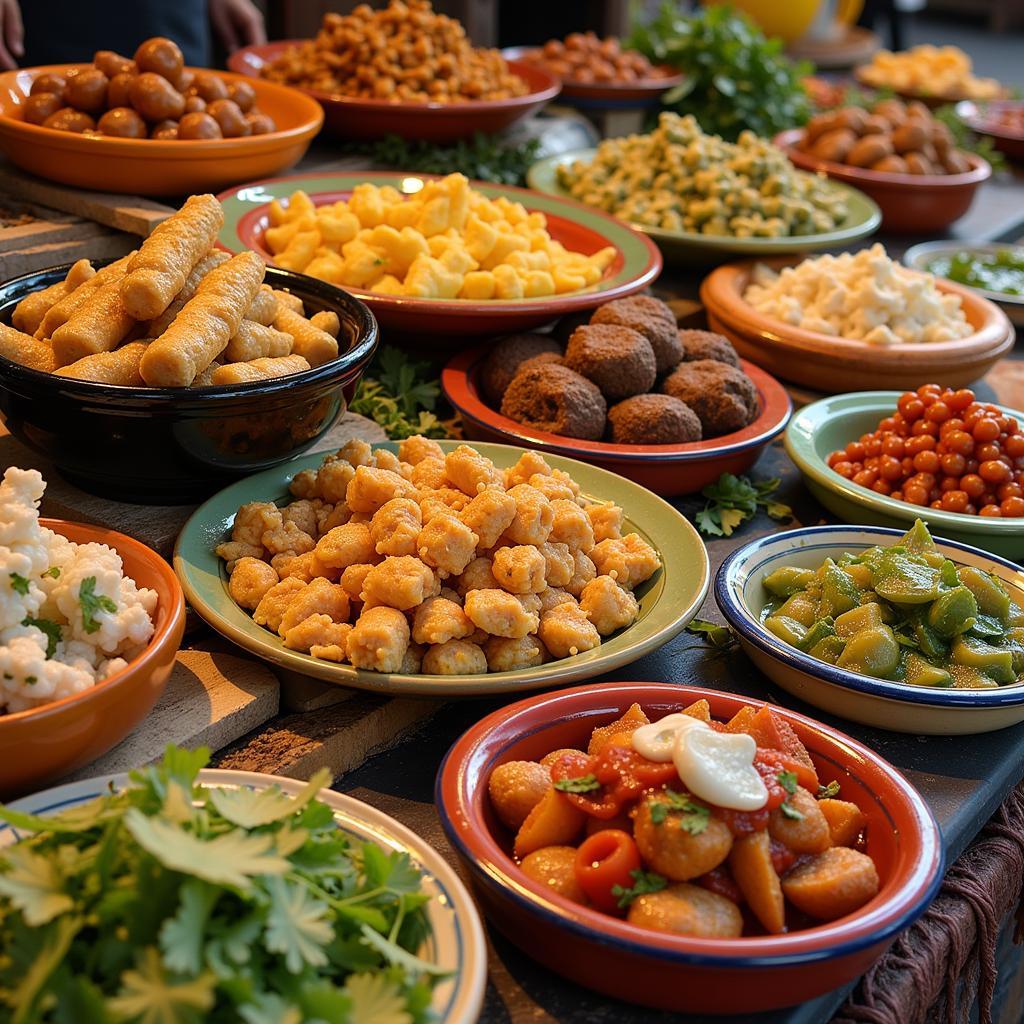A Persian Food Market is a feast for the senses. From the fragrant spices to the colorful displays of fresh produce, it’s an experience that immerses you in the rich culinary heritage of Iran. Whether you’re a seasoned chef or simply curious about Persian cuisine, a trip to a Persian food market is a must. Let’s delve deeper into what makes these markets so special.
A Sensory Symphony: What to Expect at a Persian Food Market
Stepping into a Persian food market is like stepping into a different world. The air is thick with the aroma of saffron, cardamom, and other exotic spices. Mountains of dried fruits and nuts beckon, while vendors hawk fresh produce, their voices adding to the lively atmosphere. You’ll find everything from vibrant stacks of herbs like sabzi (a mix of parsley, cilantro, and chives) to glistening piles of jewel-toned barberries. Don’t miss the variety of flatbreads, like sangak and barbari, still warm from the oven. These bustling marketplaces aren’t just about buying ingredients; they’re about connecting with a culture deeply rooted in food and community.
You might also be interested in checking out the price of Persian cat food at persian cat food price.
 Spices and Herbs at a Persian Food Market
Spices and Herbs at a Persian Food Market
Key Ingredients in Persian Cuisine
Certain ingredients are essential to Persian cooking, and you’ll find them in abundance at any Persian food market. Rice, the cornerstone of many Persian dishes, is available in various forms, from the fluffy basmati to the shorter-grained sadri. Legumes, like lentils and chickpeas, are also staples, adding protein and texture to stews and soups. And of course, no Persian market would be complete without an impressive selection of spices. Saffron, the “red gold” of Iran, adds its distinctive flavor and color to countless dishes. Other key spices include turmeric, cumin, coriander, and cardamom.
Where to Find Authentic Iranian Food Products
Looking for authentic iranian food products? A Persian food market is your best bet. You’ll find everything you need to create delicious Persian meals at home.
 Dried Fruits and Nuts at a Persian Food Market
Dried Fruits and Nuts at a Persian Food Market
Navigating the Persian Food Market Experience
For first-time visitors, a Persian food market can be a bit overwhelming. Don’t be afraid to ask questions! Vendors are usually happy to share their knowledge and recommendations. It’s also a good idea to go with an open mind and be willing to try new things. Sample the different types of dates, taste the various cheeses, and ask about unfamiliar ingredients. You might discover a new favorite flavor.
What are the most common ingredients found in a Persian food market?
Rice, herbs, spices, dried fruits, nuts, and various types of bread are some of the most common ingredients you’ll find.
What should I buy at a Persian food market?
Start with the basics: rice, herbs, and spices. Then, explore the dried fruits, nuts, and other unique ingredients that catch your eye. Don’t forget to pick up some fresh bread!
Beyond the Basics: Exploring Unique Persian Delicacies
While the staple ingredients form the foundation of Persian cuisine, there are also many unique delicacies to discover. Look for things like rosewater, which adds a delicate floral aroma to desserts and drinks, or dried limes, used to add a sour tang to stews. You might also find interesting varieties of cheese, like feta or paneer, as well as different types of yogurt drinks. If you’re feeling adventurous, try some of the prepared foods, like ash reshteh (a hearty noodle soup) or fesenjan (a rich walnut and pomegranate stew).
Looking for gold foods? Many Persian markets carry high-quality saffron, often referred to as “red gold.”
 Prepared Foods at a Persian Food Market
Prepared Foods at a Persian Food Market
Bringing the Flavors Home: Cooking with Your Persian Market Finds
Once you’ve stocked up on ingredients from the Persian food market, it’s time to start cooking! There are countless recipes available online and in cookbooks. Start with simple dishes and gradually work your way up to more complex creations. Don’t be afraid to experiment and adapt recipes to your own taste. The beauty of Persian cuisine lies in its versatility and adaptability. You can even look into options for sample cat food with Persian influences!
Conclusion
The Persian food market is more than just a place to buy groceries; it’s a vibrant cultural experience. From the fragrant spices to the friendly vendors, it’s a place that will awaken your senses and introduce you to the rich culinary traditions of Persia. So, the next time you’re looking for an adventure in flavor, be sure to visit a Persian food market near you. If you’re interested in Bazargan food, check out bazargan food.
FAQ
- What is the best time to visit a Persian food market? Weekends are usually the busiest, but also offer the widest selection of goods.
- Can I bargain with vendors at a Persian food market? Bargaining is common in some markets, but always be respectful.
- What payment methods are accepted at Persian food markets? Cash is usually preferred, but some vendors may accept credit cards.
- Are there any specific etiquette rules I should be aware of? Dress modestly and be mindful of cultural customs.
- How can I find a Persian food market near me? Search online or ask local Persian communities for recommendations.
- What should I do if I don’t recognize an ingredient? Ask a vendor for information or take a picture and research it later.
- What are some popular Persian dishes to make with ingredients from the market? Try khoresh bademjan (eggplant stew), ghormeh sabzi (herb stew), or tahchin (layered rice and chicken).
Need support? Contact us at Phone Number: 02437655121, Email: [email protected] or visit us at 3PGH+8R9, ĐT70A, thôn Trung, Bắc Từ Liêm, Hà Nội, Việt Nam. We have a 24/7 customer service team.